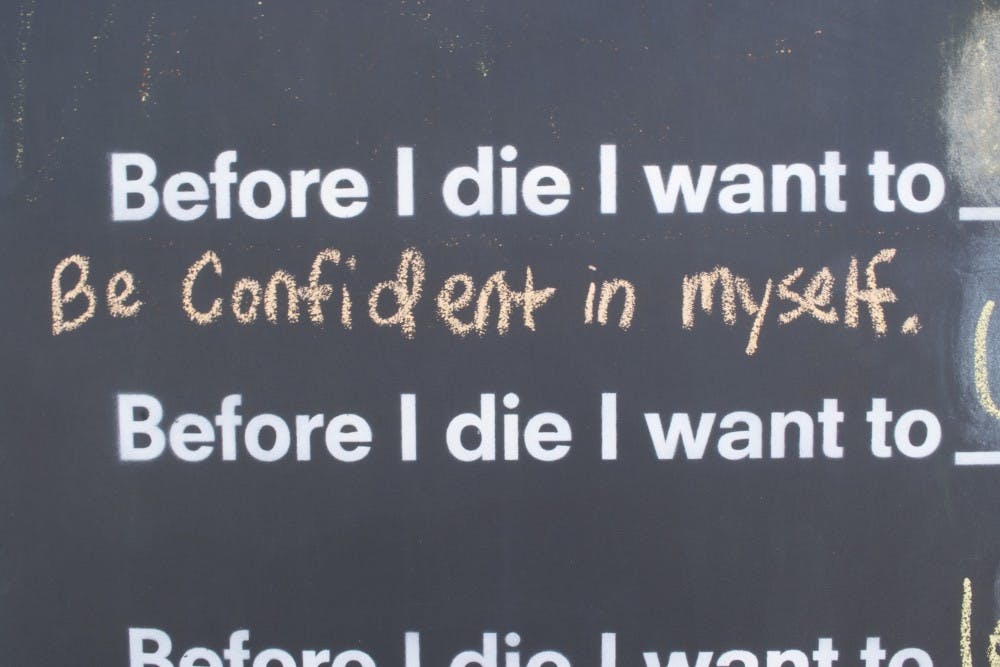
The wall is mounted on a shipping container with a row of turf running through it. The chalk imbeds itself into the paint, mingling with the dust from last night's dust storm.
It is hidden, pointed toward a neighboring building. But if someone catches a glimpse of the stark blackboard while walking between Mckinley and Roosevelt Streets in downtown Phoenix, they may be compelled to explore.

The board offers passersby a single, unfinished sentence:
"Before I die I want to ____."
The board is filled with answers ranging from the silly to the sincere. A rainbow of colors fills nearly every space of the board with recognized desires and hidden dreams.
 -
-It all started with death and an abandoned house.
When artist Candy Chang lost her mother, she experienced a long period of intense grieving. Chang struggled to adhere to her mother's philosophies of being true to one's self and living for the day, while still facing the realities of loss.
This inspired Chang to create a similar dialogue in her community, seeking to bring people together through a shared desire to accomplish their life's dreams.
After a confusing trip down the rabbit hole of bureaucratic permissions, Chang received permission to paint a wall of an abandoned building in her neighborhood in New Orleans, La.
The project flourished.
Around the world, boards are being constructed, filled with chalk-wishes, wiped clean and filled again.
"I understood my neighbors in new and enlightening ways, and I discovered the strength of the wall: it reminded me that I'm not alone as I try to make sense of my life," Chang writes in the introduction to her book about the project.
On my first trip to Phoenix's own "Before I die" wall, I wrote a broad, but fun, entry. I was riding an exhilarating high from getting my first tattoo so I felt optimistic and happy — like anything was possible. I even signed my initials next to it.

My second visit, for this post, was significantly more serious. As I face my senior year of college and a rising uncertainty of what's to come, I can't help but fall into a well of doubt.

But writing it out on the wall helped. It was cathartic, like saying something out loud that you've kept hidden in the deep recesses of your brain for so long. It relieved some of the stress and made me believe, if only for a little while, that it could happen.
Chang's installations is one of many that combine public art with widespread engagement. While the walls help beautify their surrounding area, they also offer a running observation on social behavior and the human condition.
People may gather and talk with each other around the wall, bonding over the shared experience of becoming part of an artwork. Or they could remain solitary as they contemplate what they want from life.
People will be brutally honest because the entries remain anonymous. There are no requirements or limitations on what you can and can't write on the board — no matter how crazy, you can write it there.
Before the pioneer wall was taken down and the house remodeled, Chang stenciled a final quote from actor Wendell Pierce: "Our thoughts are to the individual as our art is to the community."
The public engagement that installations like the "Before I die" walls can produce is a fascinating testament to the power of art in bringing people together in this shared experience we call life.
So, the next time you find yourself presented with the opportunity to contribute, don't hesitate. You will no doubt be moved by the result.
Read more about the "Before I die" project here.
What do you want to do before you die? What are your hopes and dreams? Tell me about it at mamccrea@asu.edu or via Twitter @mmccreary6.




